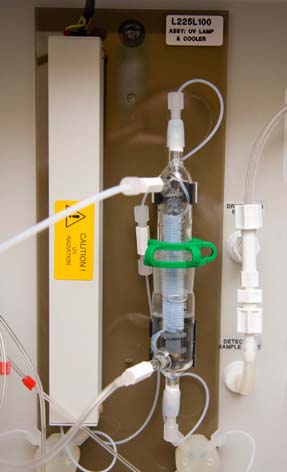ONLINE ANALYSER FOR ARSENIC, SELENIUM AND ANTIMONY IN WATER AND WASTEWATER DISCHARGES
Chemistry Section | Multi-stream Capability | Connection to PLC/Control Room | Remote Access | Flexibility
Multi-stream Capability |
The analyser system comes as standard with a 10 port stream selector allowing both standards (for calibration and checks) and samples to be automatically sequenced. |
Connection to PLC/Control RoomThe system is supplied with the PS Analytical C210S007 Online software package as standard. This gives the administrator the complete flexibility of control with full multi-tier multi user operation set up. The software gives full control and results with user determined alarms covering all possibilities. Optional additional 4-20mA and contact closures can be easily added, as well as MODBUS RTU, RS 232, OPC Server and OPC Client. |
|
Remote AccessThe online system has been designed with remote access in mind. The software can be configured to routinely send data, alarms and reminders via email. The system also has the ability to be remotely controlled over Ethernet /Internet, enabling remote diagnostics to be carried out. FlexibilityUtilising simple lamp change, the online arsenic analyser can be easily and quickly converted into an online selenium analyser or an online antimony analyser. Please click here to go to our Online Liquid Accessories page. To discuss any particular requirements and for more detailed information on the above product please complete the Information Request Form.
|
|









